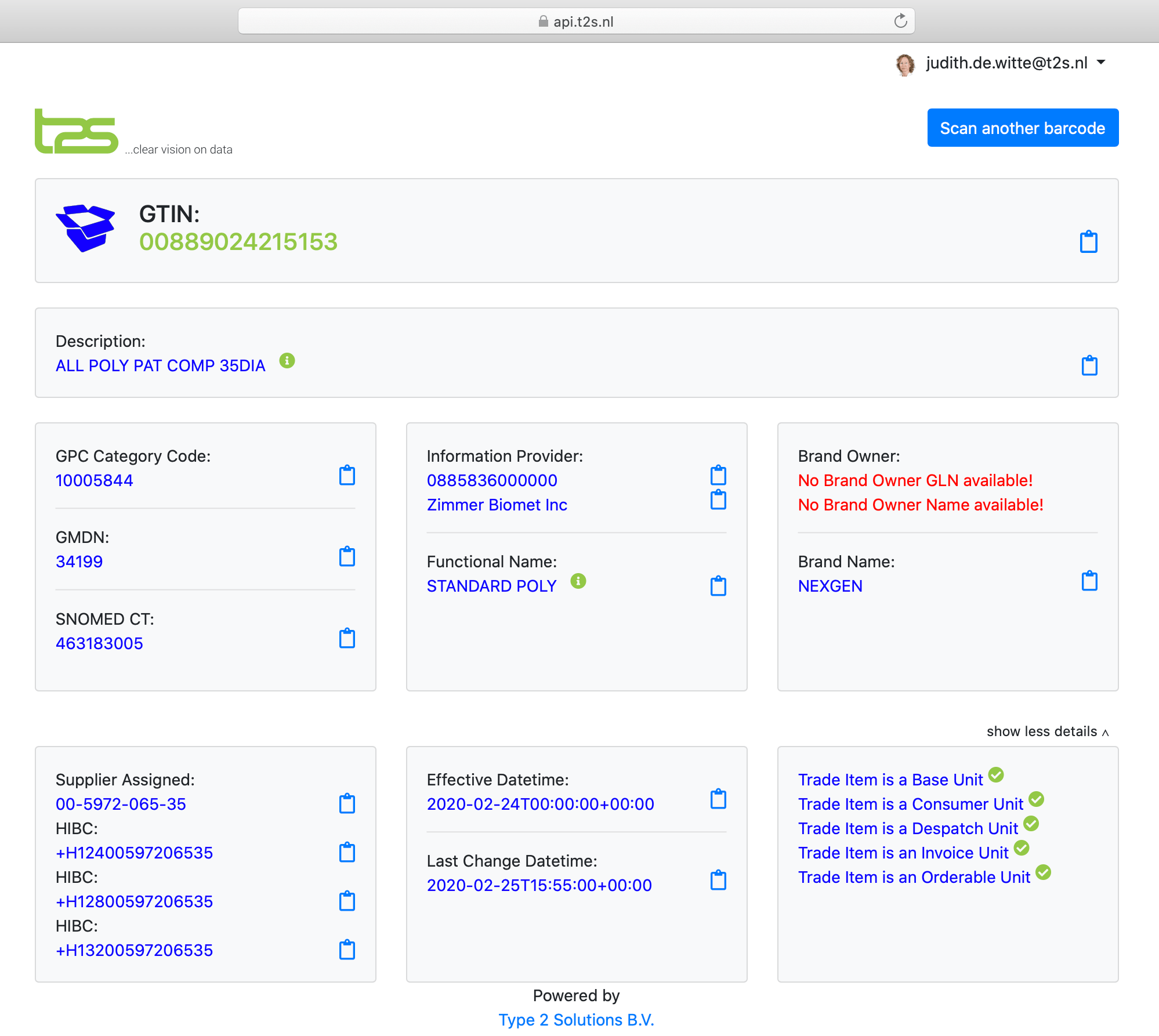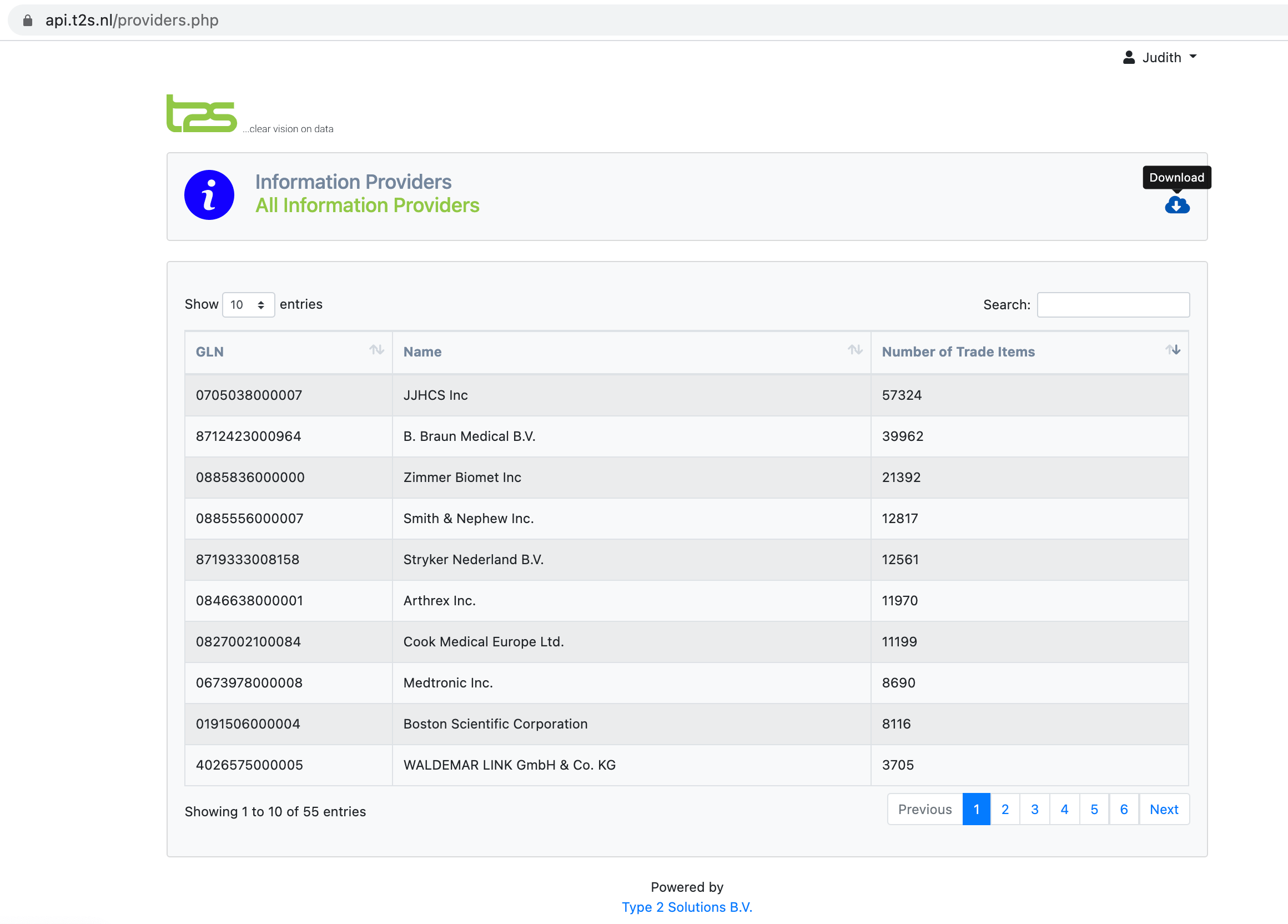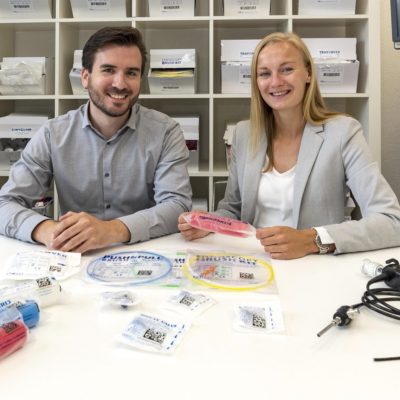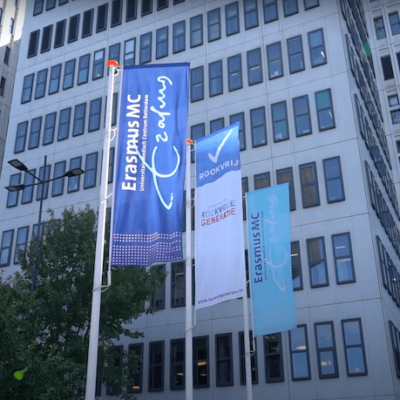Compliance with Dutch Implant Registry
Dijklander hospital is required by law to register their implants in the Dutch Implant Registry, LIR, upon usage. This is true for all healthcare institutions in the Netherlands.
While this may sound easy, in practice it turns out that not all implants are as easily registered.
Product master data
Dijklander works with HiX for their Electronic Health Record (EHR) which is later used to fill in the LIR data. In order to automatically register an implant in HiX, the implant needs to be present in the master data.
To speed up the process of adding the data to HiX, T2S has created the Implant Scanner application in collaboration with Dijklander hospital.
Implant Scanner application
The Implant Scanner application uses data from the Global Data Synchronization Network (GDSN) of GS1 Netherlands. GDSN contains product data from all of Dijklander’s suppliers. To easily retrieve the exact data needed for HiX and LIR, T2S developed a GDSN API service.
GDSN API service
This API extracts the product data required for LIR directly from GDSN. The hospital simply scans the product barcode, and the API retrieves the data within a second.

Lightning-fast product data retrieval
Diederik Rood, project manager LIR at Dijklander hospital, tells:
“Thanks to the Implant Scanner application we now have the option to retrieve missing data, insert the product into our EHR and register the implant correctly in the implant registry, all with a single scan.
It enables us to scan and register the implants during surgery, even when they were not present in our EHR system. We can register implants directly into LIR from our EHR system, and the patient has access to the data via our healthcare portal.”

Diederik Rood, project manager LIR at Dijklander hospital.
Barcode scan
The Implant Scanner application retrieves product data from the implant supplier in no time.
Dijklander hospital simply scans the product barcode, and the GDSN API retrieves the data within a second.
If there is a problem scanning the barcode, the GTIN (GS1 product code) can also be typed into the interface.
Meet LIR requirements
Diederik continues,
“To comply with the LIR legislation, a hospital has to meet 3 criteria:
- Logging implant data in the EHR of the patient.
- Provide the implant data to the patient.
- Send the data to the LIR.
We can only meet these requirements when the manufacturer supplies us with the data.”
Availability supplier data
Summarized, the Dijklander hospital – and every healthcare institution – need the following information:
- Supplier identification (GLN)
- GTIN (UDI/EAN)
- Product description (according to the manufacturer)
- External reference (manufacturer’s article number)
- GDMN (Global Medical Device Nomenclature, for risk classification)
- SNOMED (mapped via GDMN)
Enriching data: GMDN and SNOMED
In GDSN only the GDMN is supplied in the product data. The T2S Implant Scanner Application retrieved the GDMN and maps it to the corresponding SNOMED-CT code.
The SNOMED code indicates whether an implant needs to be registered in LIR.
How does it work?
“It’s quite straightforward, the application is easy to use and accessible via web”, explains Judith de Witte, Sales & Marketing manager at T2S.
“You navigate to the secure site https://api.t2s.nl, log in, scan the product barcode, and receive all necessary data. With the press of a button, you can expand the information to show all available GS1 data pool data.”
Scanning loan products in the OR
“We extensively use the tool in the OR for scanning on loan products and new products that aren’t present in HiX yet. Using the Implant Scanner Application we now have the whole set of data required to register the product with a single scan”, elaborates Diederik.
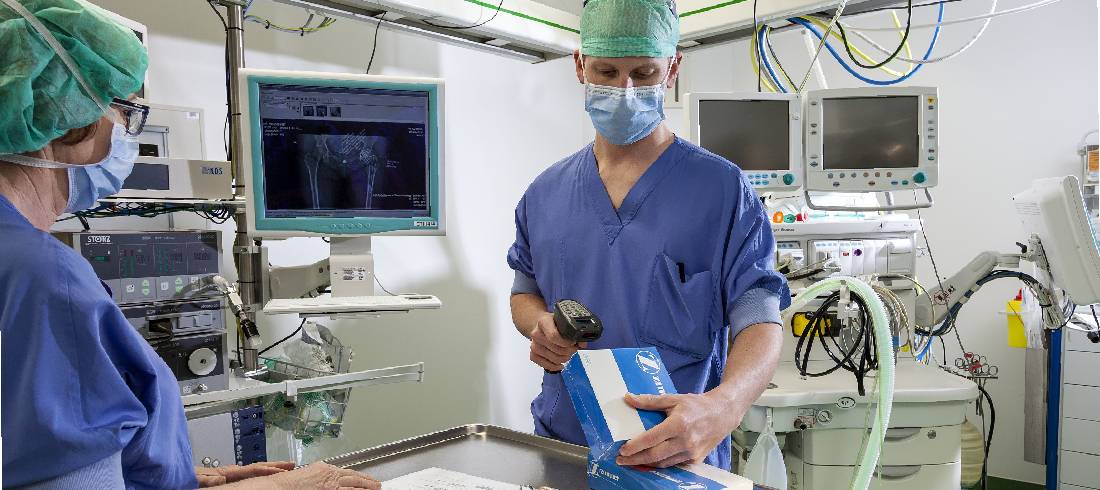
Scanning products in the OR.
Improve data quality
“Because we now have all information ready during product registration, we see an improvement in the product data quality. Besides specific product data, the application also offers Dijklander hospital an overview of all GDSN suppliers connected with us. Part of this overview is how many different products these suppliers provide for Dijklander”, tells Diederik.
“It also includes a handy dashboard which we can use to check which products were scanned. Any missing data is made apparent right away, enabling us to send targeted update-requests to our suppliers.“
Advantage – Improved registrations
“Using the Implant Scanner application we can register the implants in a fast and efficient manner, meeting the legal requirements of the Dutch Implant Registry. With a single scan we have all the data available we need to add new products to HiX and register them in LIR.
During surgery, the barcode of the implant can be scanned and registered in the EHR, based on the SNOMED-CT code the implant data can be sent towards LIR and the patient can access the data with the healthcare portal.”
Dijklander hospital can thus meet the 3 requirements set by LIR.
Data Quality
Dijklander Hospital will uses the Data Quality Dashboard to monitor, maintain, and optimize the product master data.
The Data Quality Monitor is a user-friendly online dashboard that tracks and measures the quality of the data and helps Dijklander Hospital to take targeted action.
Call to suppliers
Finally, Diederik would like to emphasize how important it is that suppliers manage and supply their product master data diligently.
“The software does its job, but without correct and complete data we still cannot provide accurate information to LIR and patients. Especially with the upcoming MDR, which increases the amount of information that needs to be registered in LIR, the importance of correct data only increases.”
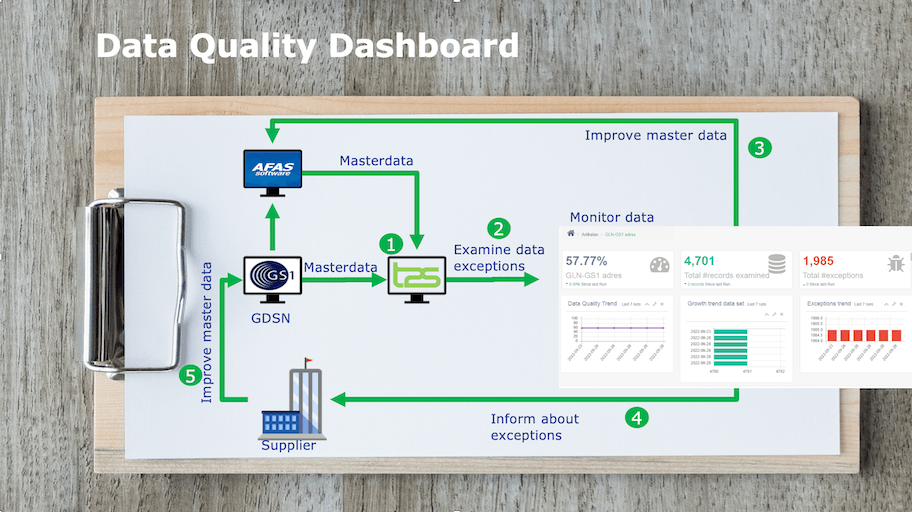
The Data Quality Dashboard at Dijklander Hospital.
Our Healthcare Solutions
Would you like to meet healthcare regulations, comply with the GS1 standards and ensure traceability and patient safety?
T2S offers solutions for barcode labeling and EDI, data migration, integration with GDSN and data quality.
Customer stories
Would you like to know more about what our clients tell about our healthcare solutions?
Click on one of the cases and read all about it.
